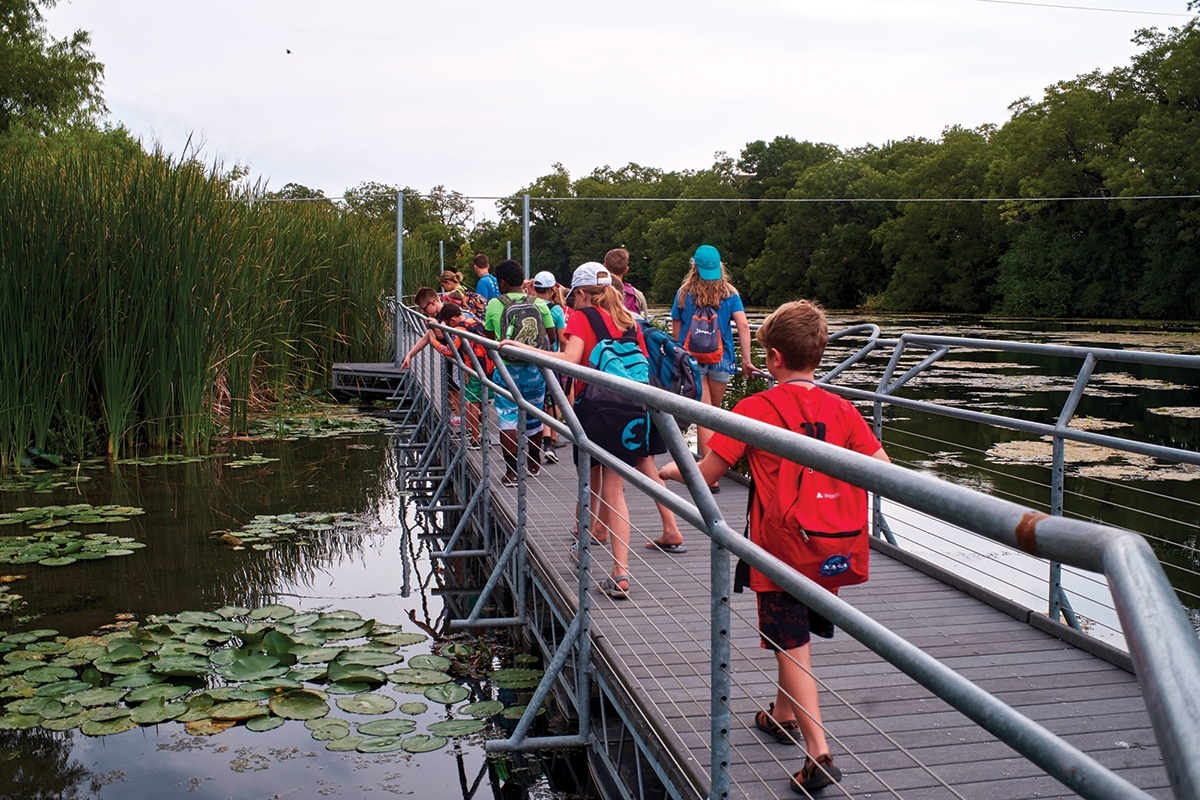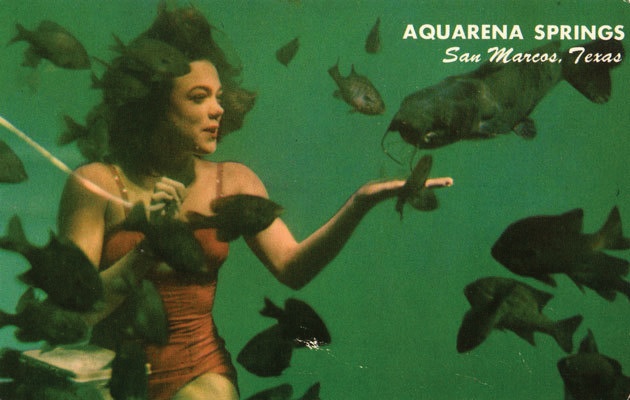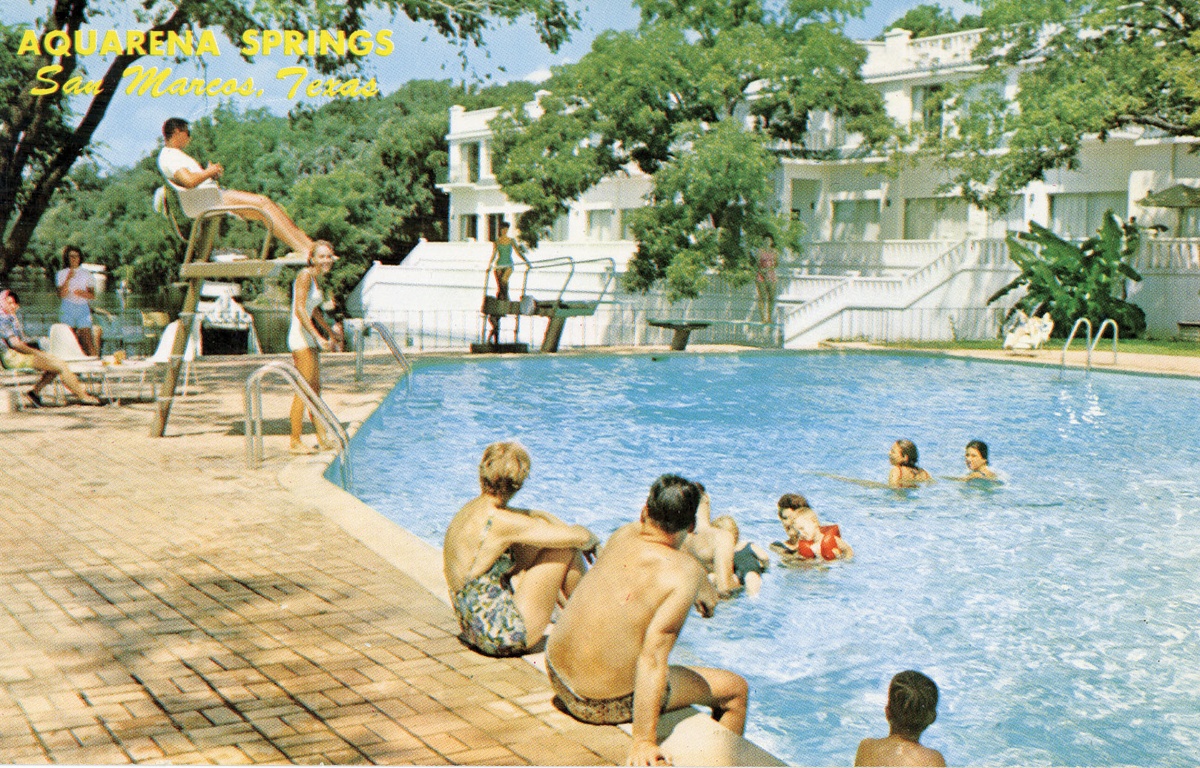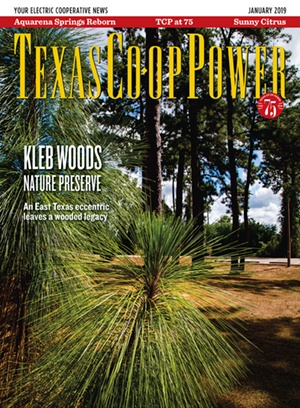When my three kids were little, we made several trips from Austin to Aquarena Springs in San Marcos.
They marveled at fish and turtles beneath glass-bottom boats, wiggled enough to frighten me in our sky-ride gondola car and spent their allowances in the gift shop. Once, we even stayed in the cotton-candy colored hotel overlooking the water. It was low-key, affordable family fun.
Recently, I returned to see how this place has transformed into the Meadows Center for Water and the Environment, a Texas State University research and conservation facility.
The center kept the glass-bottom boats, and I was happy to spot the familiar springs, bubbling up through sand like boiling pots of Cream of Wheat. Some 200 springs in Spring Lake create the headwaters of the San Marcos River, and the water sometimes reaches 40 feet deep. But through the glass-bottom boats, the lake floor looks close enough to touch, the water still gin clear thanks to filtering through limestone and a flow that completely refreshes the lake about every 24 hours.
Our boat driver tells a story similar to the one my kids heard when they were young, including a boast that this area is widely regarded as one of the oldest continually inhabited sites in North America, its first occupants arriving nearly 12,000 years ago. Native peoples gathered here regularly, and the first Europeans arrived in 1691. In 1831, colonial Spanish governor Juan Martín de Veramendi received a land grant around the springs. His heirs sold some of the land to Nathaniel Lewis in 1840, and in 1845, Lewis sold to Gen. Edward Burleson. Burleson dammed the river to form Spring Lake and used the outflow to operate a gristmill.
Local businessman A.B. Rogers purchased this tract in 1926 and built the Spring Lake Park Hotel, later called the Landmark Inn. His son Paul Rogers founded Aquarena Springs Resort in 1949, adding the boats and putting in a submersible theater where visitors watched mermaids and Ralph the Swimming Pig perform. The sky ride went up around 1959. By the 1970s, the resort drew 250,000 visitors a year and employed more than 200 people.
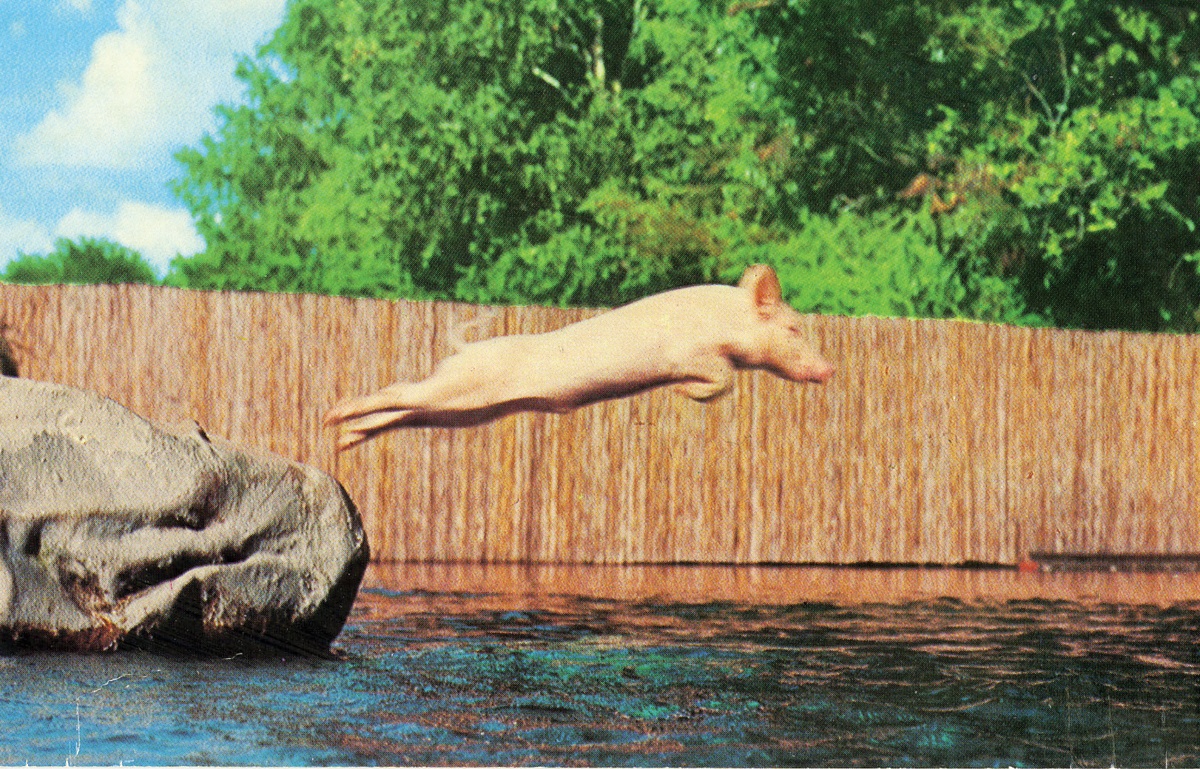
A postcard from Aquarena Springs.
Meadows Center for Water and the Environment
By the 1980s, when I first brought my kids, the park looked a little down on its luck. “The Rogerses were pioneers, but they couldn’t compete with the second generation of tourism destinations,” says Andrew Sansom, former director of the Texas Parks and Wildlife Department and current Meadows Center director. The family sold to an investor, who offered to sell to TPWD. The department didn’t see an amusement park fitting its mission, though, and passed.
In 1994, what was then Southwest Texas State University bought the property. “President Jerry Supple understood this is a globally significant site and something bad would happen to it unless he acted,” Sansom says. “There is no other university in the world with anything like this on its campus.”
With the San Marcos community concerned about the economic impact of losing Aquarena Springs, the university kept it open at first. But that didn’t work. In 2005, the university, now Texas State, created the Meadows Center and brought Sansom on board.
By 2014, almost every trace of Aquarena Springs had disappeared—the sky ride dismantled; the submarine theater removed; and the gift shop, restaurant and outbuildings demolished. A $5 million project had created several miles of nature trails and a floating boardwalk over restored wetlands.
“San Marcos is one of the fastest-growing cities in the United States, so the issue of the economic impact became moot,” Sansom says. “And we still have 125,000 visitors each year.”
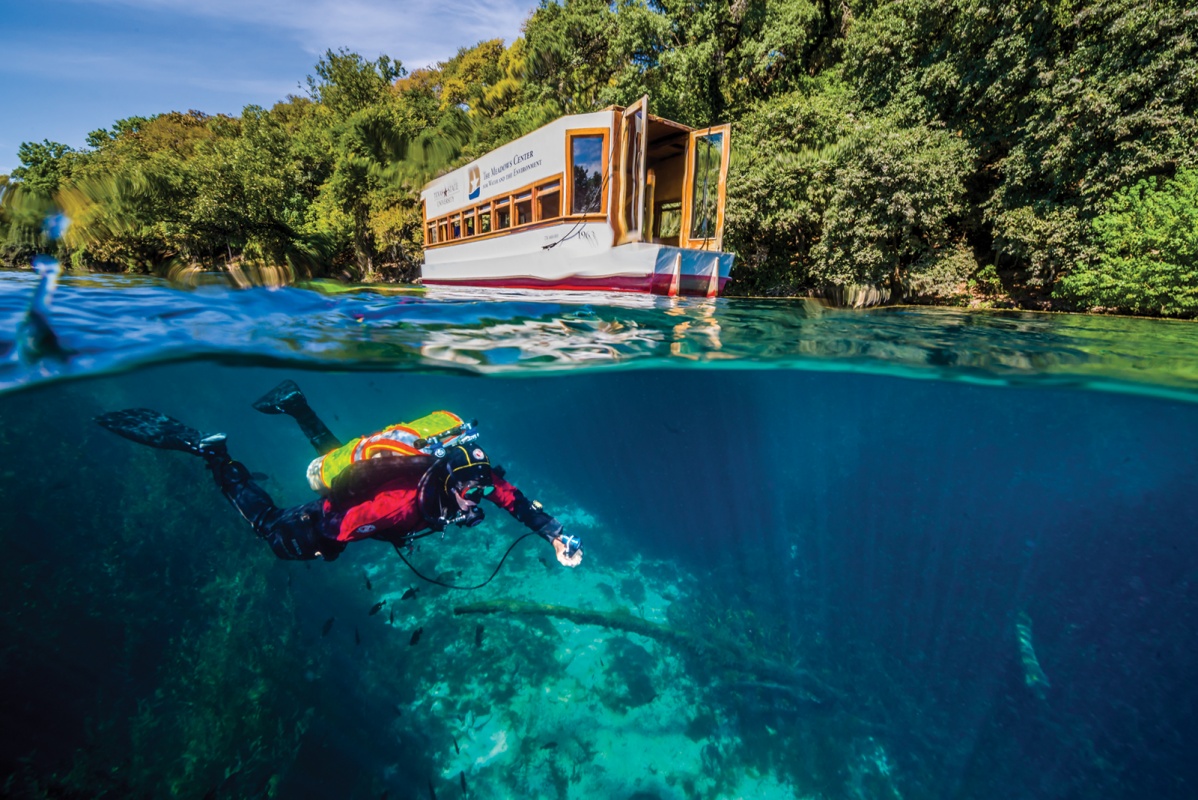
The Meadows Center conducts research around the world and at the springs in San Marcos.
Jennifer Idol | Meadows Center for Water and the Environment
I can see why. In addition to the boat tours, visitors can enjoy indoor displays, which include endangered Texas blind salamanders, and an interactive exhibit about the Edwards Aquifer, as well as the outdoor trails and boardwalks. Plans call for turning an entire floor of the old inn into a visitors and research venue. The Meadows Center conducts water-related research around the world, including on the Edwards Aquifer and endangered species in Spring Lake.
I return one more time, to kayak, an experience offered in partnership with REI Outdoor School, along with stand-up paddleboard lessons and special tours, including under a full moon. Apart from the glass-bottom boat tours, these outings provide the only public access to the lake.
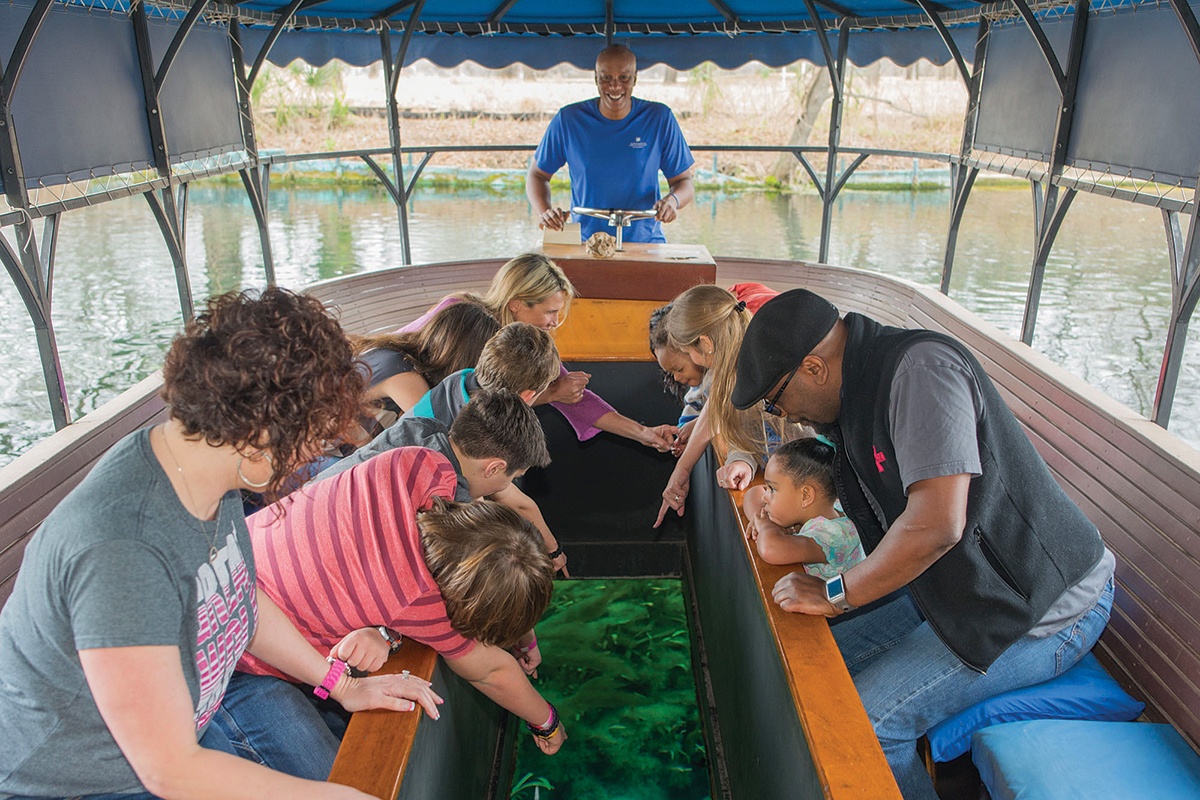
Visitors enjoy a glass-bottom boat tour.
Meadows Center for Water and the Environment
I spot herons and egrets on the shore. Under the clear water, largemouth bass, redbreast sunfish, Rio Grande cichlids and toothy spotted gar swim among forests of furry-stalked cabomba and long-leafed arrowhead grass. The center has dramatically increased the population of endangered Texas wild rice, found nowhere else on the planet, and the lake boasts one of the highest concentrations of turtles anywhere.
See more of Melissa Gaskill’s work at melissagaskill.blogspot.com.
